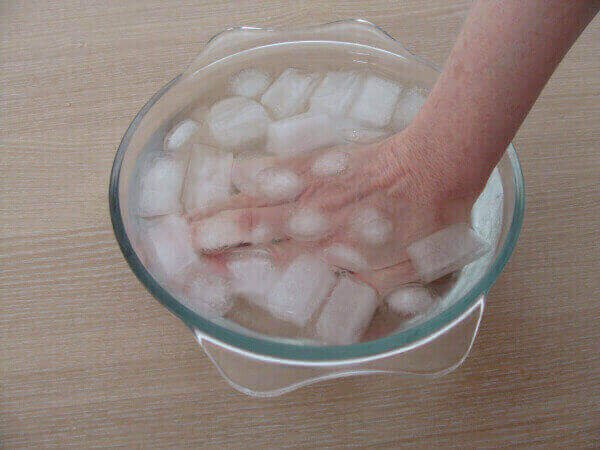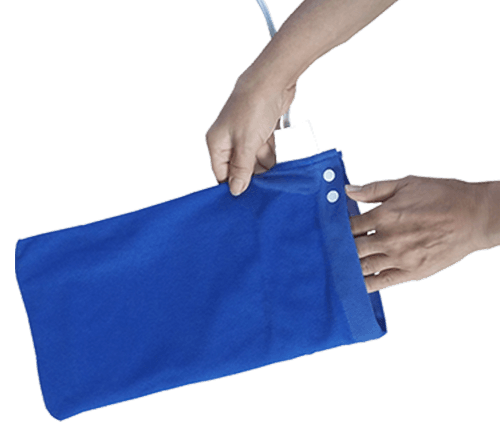Is Ice or Heat Best for Carpal Tunnel?
Treating carpal tunnel syndrome can be difficult. When it come to applying ice or heat, carpal tunnel patients always ask which is best. Heat therapy is more suitable during the chronic phase of carpal tunnel syndrome when inflammation is reduced. Applying heat to the affected area increases blood flow and oxygen to the area. This helps relax stiff muscles and reduces pain in the hand and wrist.
Importantly, ice and heat have two completely different effects on the body. Here's how ice and heat work, and which one is
medically proven
better for treating carpal tunnel syndrome.
Table of Contents
- About carpal tunnel syndrome
- What does ice and heat do?
- Ice pack or ice bath?
- Contrast therapy?
- Heating pad or heat mitt?
- Now you know!
- Summary
About carpal tunnel syndrome
If you have carpal tunnel syndrome then you already know the main
signs and symptoms. These are
pain,
numbness, tingling,
burning,
shooting electric shocks, clumsiness, and weakness in your hand or fingers. However, your little finger is fine.
Another main feature
about carpal tunnel syndrome is in the beginning, symptoms come and go. They are especially prevalent at night, while trying to sleep. But as it progresses, symptoms will persist throughout most of the day or night.
To get relief, you’ve probably heard a lot about home remedies like ice or heat. Maybe you tried one. Actually, most people have tried
both
-- by alternating between hot and cold water. This is called a contrast therapy (or bath).
What does ice and heat do?
In reality, cold or ice is not an actual “treatment”. Ice just temporarily relieves pain, like a numbing agent. If you smash you finger with a hammer, immersing it in ice makes it feel better for the time being. Medicines such as Advil and Tylenol do the same thing, but take longer to act. However, these remedies just dull the pain for several minutes; they don't eliminate the actual source of the pain.
Alternatively, heat is well-known to attack the actual cause of carpal tunnel syndrome. That cause is
tendon inflammation deep inside your wrist joint. Inflammation produces fluid buildup which in turn exerts pressure on the median nerve. This is when the
most common carpal tunnel symptoms begin to show up. Therefore:
- Ice will relieve pain and swelling temporarily. Heat will not.
- Heat will
heal
swollen tissues over the long-term. Ice will not.
Bottom line: Apply cold to an acute injury (like a sprain) to reduce pain and swelling. But for a chronic condition like carpal tunnel, apply heat.
Ice pack or ice bath?
For treating carpal tunnel, we know that cold temperatures over the hand feels good - if only for a short while. That’s because it temporarily reduces inflammation and pain. But the key to long-term carpal tunnel relief is heat.
That's not to suggest cold isn't useful. For such temporary relief, it's fast and easy to apply.
Many people use either an ice pack or ice bath to get relief. For getting temporary relief, an ice bath is most effective because it lowers the hand's temperature rapidly and more completely. But within minutes of removing your hand, the symptoms often return. Some say the symptoms are worse an hour after an ice bath.
Therefore, it's important to not ignore heat for long-term therapy.
Contrast therapy?
The idea of contrast bathing is sound, but not very effective. Immersing your hand in cold water relieves pain temporarily. And some people contend that immediately afterwards you should immerse your hand in hot water.
If this brings relief, then fine. It won't hurt. But it will not help the condition in the long term.
Instead, try using cold for acute flare-ups of pain. For the remainder of the day, try warming your hand for 15 minutes, at least 3 times per day - especially before going to sleep. Remember, do not ignore heat as a good, long-term therapy.
Heating pad or heat mitt?
A heating pad for carpal tunnel is both popular and effective. Most doctors agree that using heat is the better way to treat carpal tunnel syndrome for long-term results.
Unlike ice,
heat promotes healing
and restoration of damaged tissues.
The healing process is what will ultimately make the inflammation disappear for good.
It's important to warm the palm-side and knuckle-side of the hand at the same time. Therefore, a hot towel or heating pad will do just fine. If using a heating pad, roll it into a tube so your entire hand is heated. Hold the rolled-up shape with tape.
A
heating mitt is easier to use and is more effective. It's enclosed and warms the entire hand and wrist area.
So whether you use a towel, heat mitt or heating pad for carpal tunnel syndrome, you'll be applying a therapy that helps heal, rather than just temporarily relieves pain.
Now you know!
- Ice is good for temporary pain relief but does nothing to heal carpal tunnel.
- Heat may or may not feel good, but is
excellent
for healing carpal tunnel.
Most doctors agree that using heat is better to treat carpal tunnel syndrome. Unlike ice, heat promotes healing. The healing process is what will ultimately make the inflammation (and pain) disappear.
But heat alone isn't the answer to eliminating the problem. That's especially true if you have severe carpal tunnel syndrome.
Heat is best, but
serious
carpal tunnel treatment needs more
The debate over ice or heat for carpal tunnel will undoubtedly go on. You're seen that ice feels good and relieves pain temporarily while heat doesn't always provide immediate relief.
But only heat can fix the bigger problem.
If you have more advanced carpal tunnel syndrome you need
strong therapy to attack the problem at the root. That problem is
tendon inflammation.
How severe is your carpal tunnel? Take this Quiz to find out
Carpal tunnel surgery can be one answer to reduce that inflammation. But surgery is only a temporary fix that normally
lasts 1-2 years. After that, symptoms return in about 50% of patients.
A better answer is
myofascial release massage on the wrist area. It reduces inflammation because it breaks up the adhesions on the tendons which cause irritation. Also, myofascial release massage drains excess fluid to relieve pressure on the median nerve.
There are amazing benefits of
massage for carpal tunnel. But you need it expertly performed by a therapist or by a partner who's willing to
learn the technique. (Or use the
CarpalRx which performs this therapy automatically.) In addition, you need the massage every day (twice daily is best) for at least 4 weeks for maximum benefit.
Summary
The debate about ice, heat & carpal tunnel syndrome is everywhere. We know an ice bath for carpal tunnel feels good, and is a way to get fast pain relief - even if just temporarily. But it does nothing to heal the inflamed tendons below the skin. And ice does nothing in the long-term for treating carpal tunnel. However, heat for carpal tunnel is different. Heat increases blood flow and speeds tendon healing. In time, inflammation is reduced. That’s why heat is better to treat carpal tunnel syndrome as part of a long-term therapy program.
About






